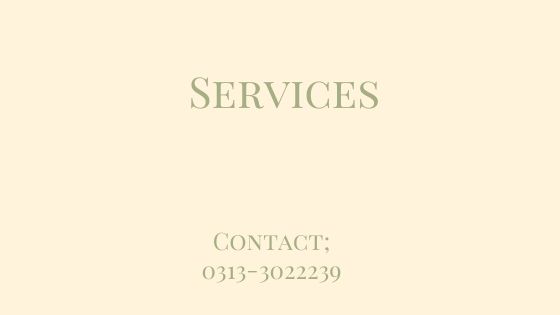Quick and Smart Ideas to use for SEO-On-Page SEO
Did you know that SEO drives 22% of all website visits? But what is SEO? SEO is taking into consideration what the web crawler wants. In most of the cases, what google or bing wants and giving them just that. In return, the search engine rewards the site by ranking these posts higher in the search result.
There is no proper guideline as to what google algorithm is in terms of its SEO. Obviously, if Google were to reveal its secret sauce. Then there would be no point in Google existing, as everybody would know and act accordingly to rank higher.
Furthermore, Here we will be discussing, in particular, Google, but the idea would apply to all search engines.
The best way as Google puts it is to make content for the general public. In other terms, give value to the public, and in return, the bots of Google will help you rank higher in their search pages.
First of all, it must be clear that Search Engine optimization or, in other terms, SEO is an iterative process. One can never know what the general public would like to see, and their perspectives about a specific topic keep on changing and evolving. Without a doubt the Topics, you are writing about should be up to date, relevant, and are useful for your audience.
SEO in its broadest term can easily be defined as;
"There are many ways to implement SEO, such as using relevant keywords, quality content, and optimal multimedia content on your web pages."
Book ref:
Introducing SEO: Your quick-start guide to effective SEO practices
Here is the list of content that you should Consider when Writing your article: To create an optimal experience, you need, to focus on the following page-optimization factors
- Title tags
- Meta keywords and meta descriptions
- Headings
- Engaging content
- Image optimization
- Interactive media
- Outbound and internal links
 |
| Image is taken from SearchEngineWatch.com |
Title Tags:
In a page’s HTML code, the <title> tag gives an indication of the page content. (You can find the words used between the <title> tags by viewing the page source in Firefox; the method varies depending on the browser.)Meta Keywords and Meta Descriptions
Recently, Google confirmed that it doesn't consider meta keywords and descriptions as ranking factors. Nevertheless, meta keywords and meta descriptions are cached, so it would not be a best practice to ignore them. Although they are not consequential in determining search engine results. Meta descriptions can be an excellent way of advertising; they may or may not be displayed in the search results.Heading Tags (h1, h2, h3, h4, h5, and h6)
Heading tags are an important on-page factor. The <h1> (heading 1) tag is crucial and must be relevant to the topic discussed on the web page. It educates readers about the topic on that page. Instead of filling a page with clutter, it is a good practice to stick to a single topic; the heading 1 tag is imperative because it indicates the page's topic. Use relevant words in the heading to help users and also spiders understand the page's content. Google adheres to text semantics and emphasizes its use for better results.Avoid skipping heading levels on a web page. <h1> should be followed by <h2> , which in turn may have a <h3> , and so on. You may have multiple <h2> tags or subsequent tags if needed. Your web page must display a systematic pattern or consistency.
Engaging Content
Using meaningful and pertinent content in the body section of the site is vital. Relevant content is king. The content should not be irrelevant or stuffed with keywords—the search engines may penalize you for it. However, you can use keywords or close variations of them twice or three times on a page in a logical way.Image Optimization and Interactive Media
Earlier SEO was text-based, but this has changed significantly. You should use interactive media such as audio, video, images, and infographics to connect with your users. Use captions and alternate text for media and build relevant content around these media.You can use a single key phrase in the alt text if it is relevant to that image.
Outbound and Internal Links
Internal links are a vital feature of SEO. These are links on web pages that point to another page in the site or domain. SEO-related research suggests that no page on your website should be more than three clicks from the home page. This means that all pages should be easily accessible.Book ref: Introducing SEO: Your quick-start guide to effective SEO practices.
There is also a checklist I have developed using which, will help you in your SEO
1. The Domain Name
2.Web Page Checklist and Adverts
3.Site Structure
4.Comments:
5.Social Presence
6. Would you trust the site?
7.Bounce Rates & Time on Site
8.Legal pages
9.Content Quality
10.Inbound Link Profiles
Now that the concepts are clear. Let's develop a simple hack to write a better post. If you are using Wordpress, then you can easily use the Yoast plugin, which could help you with your on-page optimization.
But what if you are using some other platform that does not support this Plugin. The idea is simple and is a Four-step process:
- First, we will make a free WordPress website using a free hosting service. I will be using 000webhosting as an example.
- Install WordPress.
- Install the Yoast plugin.
- Optimize the post using the Yoast plugin and copy-paste it the HTML code from WordPress to the content management system of your choice.
Using the list given above and practicing with Yoast SEO, it will be a good kick-starter for developing excellent skills for on-Page SEO. However, the list given above is not exhaustive, but it will provide a good idea for beginners.
Apart from the comments section, you can also contact me @






Comments
Post a Comment
Please do not Spam